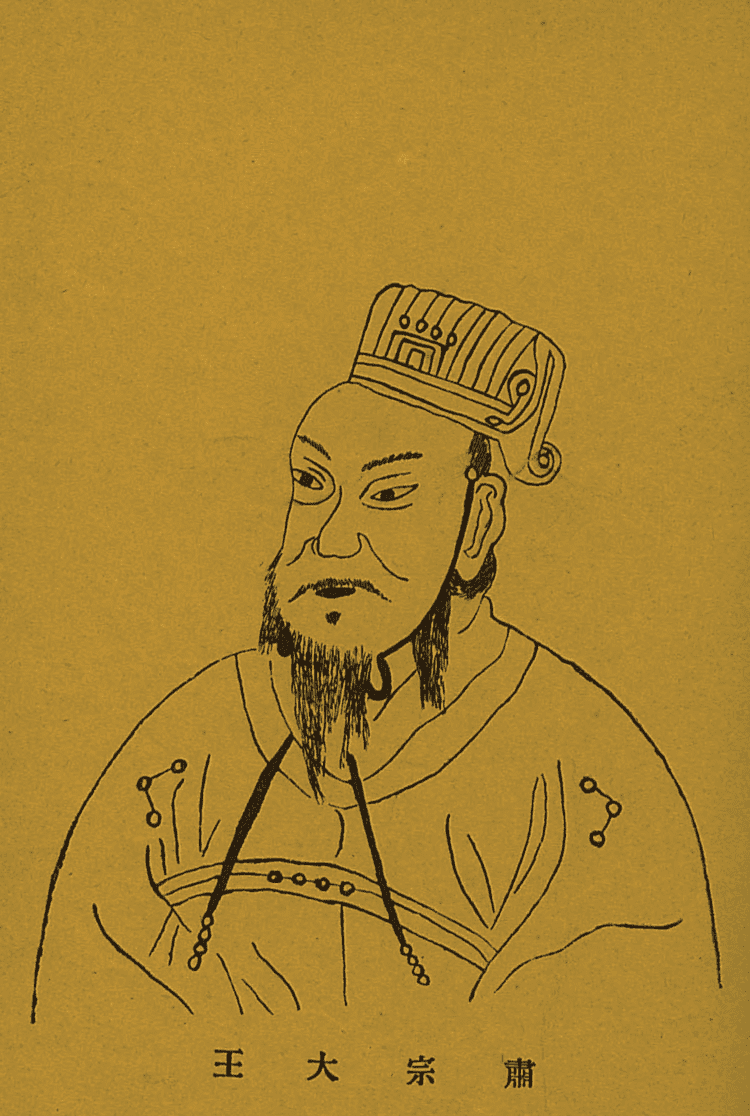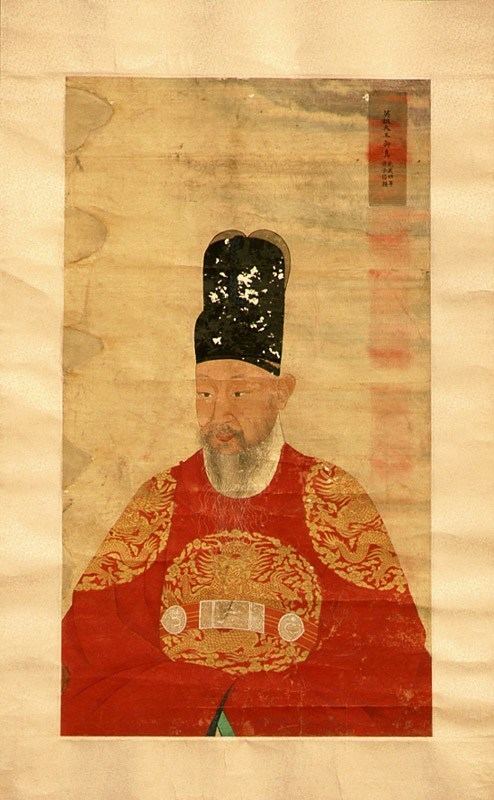Reign 1674–1720 Successor King Gyeongjong Role King | Predecessor King Hyeonjong Name Sukjong Joseon | |
 | ||
Issue King Gyeongjong of JoseonPrince SeongsuPrince YeongsuKing Yeongjo of Joseonunnamed sonPrince Yeonryeongunknown sonunnamed daughterunnamed daughter Grandchildren Crown Prince Sado, Princess Hwawan, Princess Hwahyeop Similar People Hui‑bin Jang, Yeongjo of Joseon, Queen Inhyeon, Suk‑bin Choe, Gyeongjong of Joseon Born 7 October 1661 (age 58), Gyeonghui Palace, Kingdom of Joseon Died July 12, 1720 (aged 58) Gyeonghui Palace, Kingdom of Joseon Similar Hui bin Jang, Gyeongjong of Joseon, Queen Inhyeon | ||

Sukjong (7 October 1661 – 12 July 1720) was the 19th king of the Joseon Dynasty of Korea from 1674 to 1720. A skilled politician, he caused multiple changes of political alliance throughout his reign, switching between the Southerner, Westerner, Soron, and Noron political factions.
Contents
- Kings of Joseon
- Biography
- Factional Fightings
- Family
- Royal Noble Consort Myeong of the Miryang Park clan
- His full posthumous name
- In popular culture
- References
Kings of Joseon
Biography
King Sukjong was born on 8 September (15th day of the 8th lunar month) 1661 to King Hyeonjong and Queen Myeongseong at Changdeok Palace. His given name was lee soon. He became the Crown Prince Myeongbo in 1667 at age 6, and in 1674, at age 13, he became the 19th ruler of the Joseon Dynasty.
King Sukjong was a brilliant politician, but his reign was marked by some of the most intense factional fights in Joseon dynasty. Sukjong frequently replaced faction in power with another one to strengthen the royal authority. With each change of government, which was called hwanguk (Hangul: 환국; Hanja: 換局), literally turn of the state, the losing faction was completely driven out of politics with executions and exiles. Nevertheless, the chaotic changes of government did not affect the general populace significantly, and his reign is considered one of more prosperous times.
Factional Fightings

In the early years of Sukjong's reign, the Southern faction and Western faction clashed over the Royal Funeral Dispute, a seemingly minor issue regarding the mourning period for Queen Insun. The Southern faction claimed that the mourning period should last one year while the Western faction argued for a nine-month mourning period. A one-year mourning period meant that Hyojong of Joseon was considered the eldest son while 9-month period would suggest that Hyojong was considered not the eldest son, following the rules that governed the yangban class. In other words, the Western faction viewed the royal family as the first of the yangban class rather than a separate class for which different rules applied. The two factions were also in conflict over the issue of fighting the Qing Dynasty, which was considered barbaric country (as opposed to Ming Dynasty) that threatened Joseon's national security. The Southern faction, led by Huh Jeok and Yoon Hyu, supported war against Qing while Western factions wanted to focus first on improving domestic conditions.
Sukjong at first sided with the Southern faction, but in 1680, Huh Jeok was accused of treason by Western faction, which led to the execution of Huh Jeok and Yoon Hyu and purging of the Southern faction. This incident is called Kyungshin hwanguk (경신환국). Now in power, the Western faction split into the Noron (Old Learning) faction, led by Song Siyeol, and the Soron (New Learning) faction, led by Yoon Jeung. After nine years in power, the Noron collapsed when Sukjong deposed Queen Inhyeon, who was supported by the Western faction, and named Consort Hui of Jang clan (also called Consort Jang or Jang Hui-bin) as the new queen. She is widely thought to be one of the most beautiful women in Joseon Dynasty, and her beauty was mentioned in the Annals. The Western faction angered Sukjong when it opposed the naming of Consort Jang's son as crown prince. The Southern faction, who supported Consort Jang and her son, regained power and drove out Western faction, executing Song Siyeol in revenge. This is called Gisa hwangguk (기사환국).
Five years later in 1694, the Southern faction was planning another purge of the Western faction, accusing them of conspiracy to reinstate the deposed Queen Inhyeon, when Sukjong began to regret deposing Queen Inhyeon and favor Consort Suk of Choe clan (Consort Choe), an ally of Queen Inhyeon and the Noron faction. Angry with the Southern faction's attempt to purge Westerners, Sukjong abruptly turned around to purge Southerners and brought the Western faction back in power. The Southern faction would never recover from this blow, also called Gapsul hwanguk (갑술환국). Sukjong demoted "Queen Jang" to Consort "Jang Hui-bin" and reinstated "Queen Inhyeon". Consort Jang was eventually executed (with poison) for cursing Queen Inhyeon to her death. The Soron faction supported Crown Prince Hwiso (Yi-Yun), Consort Jang's son, while the Noron faction supported Consort Choe's son, Prince Yeonying (Yi-Geum), later to become Yeongjo of Joseon. Late "Queen Inhyeon" and newly installed "Queen Inwon" were childless.
In 1718, Sukjong allowed the crown prince, soon to be Gyeongjong of Joseon, to rule the country as regent. Sukjong died in 1720 supposedly after telling Yi Yi-myoung to name Yeoning-geum as Gyeongjong's heir, but in absence of a histriographer or recorder. This will would lead to yet another purge which led to the execution of four Noron leaders in 1721, followed by another purge with the executions of eight Noron people in 1722.
Sukjong made tax system reform (大同法), promoted the use of coin (Korean mun) and allowed the middle class and children of concubines to advance to higher governmental positions in provinces. In 1712, Sukjong's government worked with the Qing Dynasty in China to define the national borders between the two countries at the Yalu and Tumen Rivers. The Japanese government recognized Ulleung Island as Joseon's territory in 1696 (Korean Government insists that Liancourt Rocks was also recognized. But Japanese Government insists that Liancourt Rocks was not recognized as Joseon's territory).
Sukjong's reign also saw agricultural development of far provinces and increased cultural activities including publications. He died after reigning for 46 years in 1720 at age 60. He was buried in Myeongreung (명릉) in Gyeonggi province, Goyang City inside Western Five Royal Graves (西五陵 서오릉 seooreung).
Family
- Queen Ingyeong of the Kim clan (인경왕후 김씨)
• Two unnamed daughters (died at birth) - Queen Inhyeon of the Yeoheung Min clan (인현왕후 민씨)
• No issue - Queen Inwon of the Gyeongju Kim clan (인원왕후 김씨)
• No issue
- Royal Noble Consort Hui of the Indong Jang clan (희빈 장씨)
- Crown Prince Hwiso, Yi Yun (왕세자 1688-1724) to become Gyeongjong of Joseon, only known son of Royal Noble Consort Hui of the Indong Jang clan
- Prince Seongsu (성수왕자),disputed
- Royal Noble Consort Suk of the Haeju Choe clan (숙빈 최씨)
- Prince Yeongsoo (영수왕자), died young
- Prince Yeoning, Yi Geum (연잉군 1694–1776), to become Yeongjo of Joseon
- Unnamed son (1698-1698)
- Unnamed daughter (1707, disputed)
- Royal Noble Consort Myeong of the Miryang Park clan (명빈 박씨)
- Prince Yeonryeong, Yi Hwon (연령군, 1699–1719)
- Royal Noble Consort Yeong of the Kim clan (영빈 김씨)
• No issue - Gwi-in Kim (귀인 김씨)
• No issue - So-ui Yu (소의 유씨)
• No issue - So-ui Choe (소의 최씨)
• No issue
Royal Noble Consort Myeong of the Miryang Park clan
Very little is known about her. She was the daughter of Park Hyo-geon (Hangul: 박효건, Hanja: 朴孝建), a yangban of the Miryang Park clan (Hangul: 밀양 박씨, Hanja: 密陽 朴氏), and entered the royal court as a gungnyeo. In 1698, on the fourth day of the eleventh month of the twenty-fourth year of the reign of King Sukjong, she was made a royal concubine with the rank of Suk-won. In 1699, on the twenty-third day of the tenth month in the twenty-fifth year of King Sukjong's reign, she was elevated to the rank of Suk-ui after giving birth to a son, Yi Hwon (Prince Yeonryeong), and in 1702, on the eighteenth day of the tenth month in the twenty-eighth year of King Sukjong's reign, she was elevated to the rank of Myeong-bin. (Myo 명 - meaning "bright") She died in 1703, on the fifteenth day of the seventh month in the twenty-ninth year of King Sukjong's reign.
It was said that Prince Yeonryeong was King Sukjong's favorite son. He died in 1719, 1 year before Sukjong's death in 1720. King Sukjong was greatly disturbed and saddened by the news. He wanted to attend to the funeral details himself, but couldn't because he was very ill and officials opposed, fearing it'd worsen his health. It was sad that Prince Yeonryeong didn't have any children, so Sukjong adopted another prince to be Prince Yeonryeong's "adopted child" to continue the line. Prince Yeonryeong was buried next to his mother Lady Park Myeongbin.
